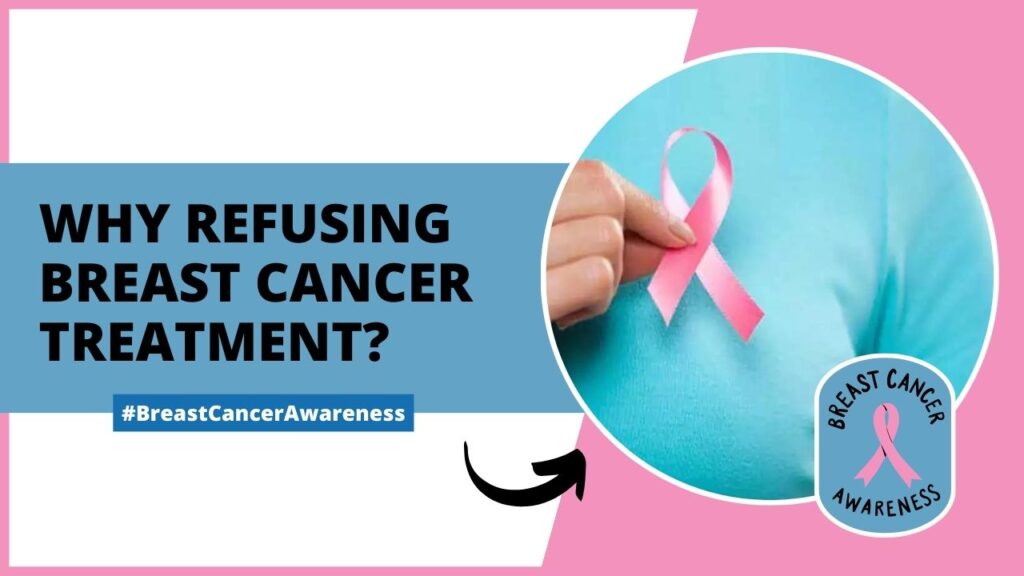For many patients, a breast cancer diagnosis initiates a series of consultations and discussions regarding treatment options. Thanks to advancements in medical science, this once-fatal condition now boasts a five-year survival rate of 99% with appropriate treatment, as reported by the American Cancer Society.
However, this promising statistic does not reflect the reality for patients who decline treatment, most of whom are minorities, according to a recent study. This study, which analyzed data from nearly 3 million patients in the National Cancer Database between 2004 and 2020, evaluated four treatment modalities for cancer: chemotherapy, surgery, radiotherapy, and hormone therapy.
The study found that Black, Native American, and Asian American patients were more likely than White patients to refuse treatment, particularly chemotherapy. Conversely, Hispanic patients were less likely to decline any form of treatment. Furthermore, the study highlighted that Black patients who declined chemotherapy had significantly higher mortality rates compared to White patients who did the same.
Despite the availability of numerous effective breast cancer treatments, why are many patients opting out? Monique Gary, DO, the medical director of the cancer program at Grand View Health, explained to Verywell that there are two primary reasons why Black patients, especially women, refuse treatment: medical mistrust and socioeconomic factors.
“There has been significant medical mistrust, particularly concerning aggressive and toxic therapies like chemotherapy,” said Gary. “Many people still feel they must choose between a vaguely defined, mythical holistic approach and the well-defined pathways of proven medical care.”
The Financial Burden
In Dr. Gary’s experience, financial toxicity significantly influences patients’ decisions to refuse aggressive cancer treatments like chemotherapy.
“It’s not just the cost of treatment but also the travel expenses and the loss of wages associated with it,” said Dr. Gary. “The financial strain that cancer treatment imposes on both the patient and their support system is considerable.”
Minority patients often face disadvantages from the point of diagnosis, or even earlier due to misdiagnosis and delayed diagnoses. For instance, Black women are more likely to develop aggressive cancers, including triple-negative breast cancer. The most effective treatment for this type of cancer typically involves a combination of surgery and chemotherapy. However, patients who delay starting or do not complete treatment have poorer outcomes, according to Dr. Gary.
Given the critical impact of cost, Dr. Gary emphasizes the importance of financial navigators in improving treatment adherence. At Grand View Health, Dr. Gary’s cancer program collaborates with a financial navigator who helps patients understand what to expect, explores options for care, and identifies ways to alleviate the financial burden, ensuring they can complete their treatment from start to finish.
Concerns About Being a Burden on Family
In a recent study, women of Asian descent were less likely to initiate breast cancer treatment promptly or even accept treatment at all. Sora Park Tanjasiri, MPH, DrPH, a professor and associate director of cancer health disparities at the University of California, Irvine Public Health, noted that interruptions in family roles significantly influence Asian patients’ decisions regarding care.
“We often see concerns about how cancer and its treatment will affect their ability to fulfill family responsibilities,” said Tanjasiri. “Asian Americans tend to be more open to surgery, but they have significant concerns about the side effects of chemotherapy, such as fatigue and the time commitment, which can impact their roles as wives or mothers.”
Tanjasiri also pointed out that the fear of burdening loved ones plays a crucial role. For instance, Asian women may conceal their cancer diagnosis from their children to shield them from worry. However, this culture of secrecy can adversely affect outcomes for both patients and their families.
“In an ideal scenario, all details are openly discussed,” said Tanjasiri. “Yet family members often feel a desire to support their wife, sister, or mother, but the patient may not share critical information.”
After interviewing newly diagnosed Vietnamese cancer patients for her research with the Chao Family Comprehensive Cancer Center, Tanjasiri found that many patients needed to permit themselves to seek support.
“These women are accustomed to being the providers and supporters, so stepping into the role of a patient can be challenging,” said Tanjasiri. “It touches on their core identity.” However, she added that once patients embraced their role and reached out for help, they felt more comfortable accepting support.
Socioeconomic factors also play a role. Tanjasiri noted that even with insurance, patients from all racial and ethnic backgrounds often struggle to afford copays, deductibles, and prescriptions, which can lead to long-term financial burdens in cancer care.
Ways to Create Positive Changes for Patients
Tanjasiri and Gary support the study’s findings and believe that improving breast cancer outcomes for minorities requires a shift in care focus, emphasizing the need for equitable solutions for patients in lower socioeconomic conditions.
Having a support system from various providers is another crucial element.
“There’s a significant movement in oncology to connect patients with social workers right away so they can access necessary resources,” said Tanjasiri.
Regarding financial support, Tanjasiri highlighted the American Cancer Society’s lodging and transportation services, as well as compassionate care funds to help cover out-of-pocket expenses. Social workers can also assist with legal support, helping patients file for the Family and Medical Leave Act (FMLA) to maintain their employment and insurance coverage.
Tanjasiri also emphasized the importance of patient navigators, who can coordinate appointments among various care team members, as cancer patients often work with multiple providers, including oncologists, surgeons, and radiologists. Cancer navigators can ensure that patients understand their treatment options, particularly when language barriers are present—an important cultural factor impacting minority health outcomes.
To implement these changes effectively, Tanjasiri suggested assessing a patient’s needs at the point of diagnosis as a strong starting point.
“We need to identify the challenges that might affect successful treatment completion from the outset,” she explained. “We ask about insurance, income sources, transportation arrangements, and lodging needs.”
Though this may seem straightforward, providers cannot facilitate access to potentially life-saving treatments and support without first understanding patients’ specific needs and desires.
Conclusion
In summary, addressing the challenges faced by minority breast cancer patients requires a multifaceted approach that includes equitable care solutions, robust support systems, and effective communication. By understanding patients’ needs and providing comprehensive resources, we can significantly improve treatment outcomes and foster a more inclusive healthcare environment.



